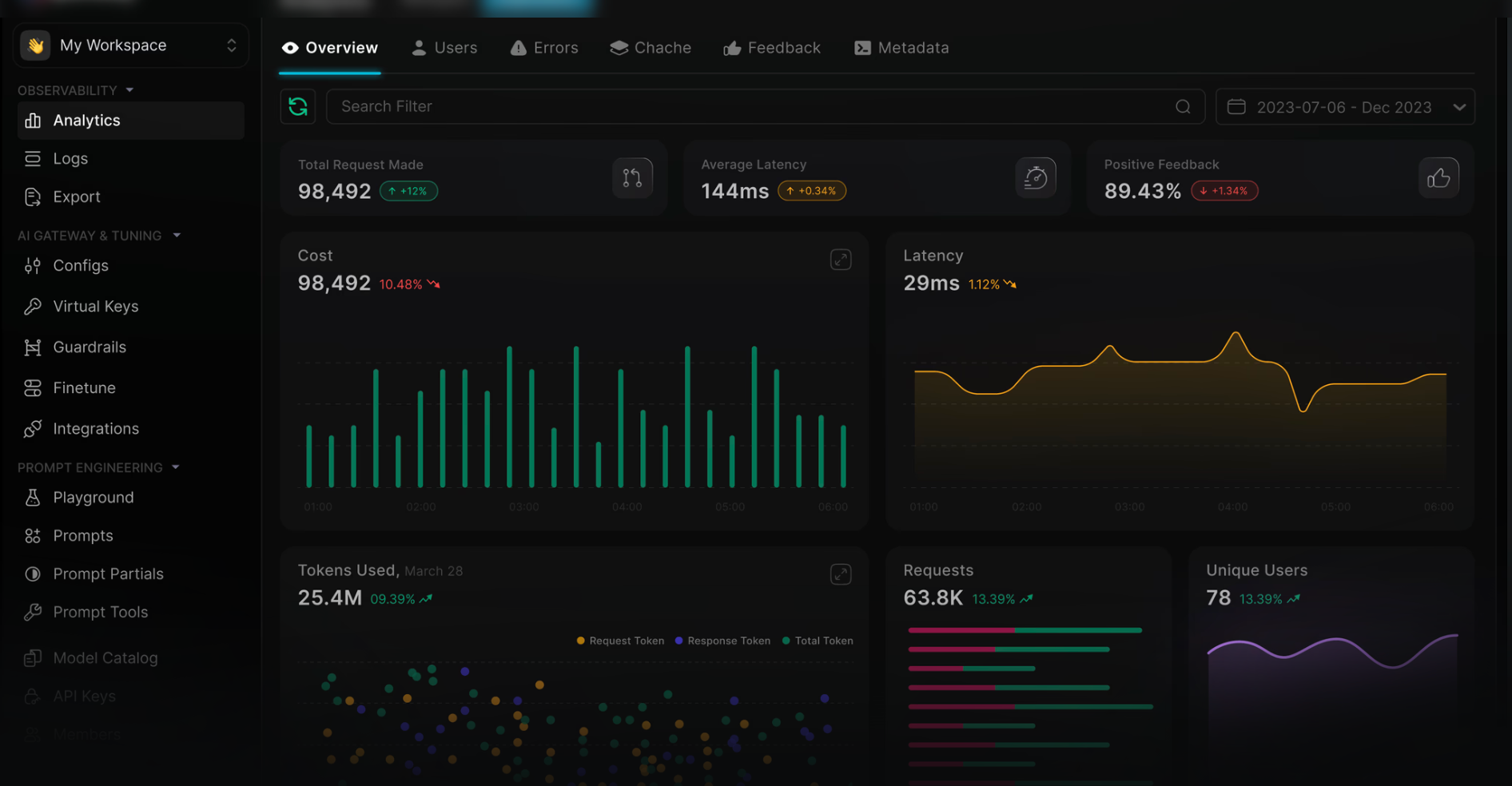Why forward compatibility is critical for Agentic AI companies
Learn why forward compatibility is crucial for agentic AI companies seeking enterprise adoption. Discover how Portkey's AI Gateway helps organizations safely integrate new AI capabilities, test models in real-time, and manage resources—all without disrupting existing systems or breaking budgets
Working with enterprise clients, we keep hearing the same concern: "What if we invest in AI today, and it's obsolete tomorrow?" It's valid. While tech leaders understand the transformative potential of agentic AI, they're watching the breakneck speed of AI development with equal parts excitement and anxiety.
Now, we're all familiar with backward compatibility - when you build a system, you ensure it works with existing infrastructure, browsers, and operating systems. But in the AI space, we're facing a different challenge altogether.
Look at how dramatically AI has evolved since 2022. Every few months brings groundbreaking models with significantly improved capabilities.
This speedy evolution has created a dilemma in enterprise decision-making. Companies find themselves caught between two uncomfortable choices: risk falling behind by not adopting AI, or risk wasting resources on solutions that might become outdated within months.
The result? Inaction. Companies remain stuck, unable to move forward with AI adoption despite knowing they need to.
To solve this dilemma, you need Forward compatibility.
Understanding forward compatibility
Forward compatibility means building AI systems that can work with future versions of models, frameworks, and capabilities without major rewrites or restructuring. When your system is forward-compatible, you can take advantage of new AI updates without disrupting your existing integrations and customizations.
This is particularly important given how rapidly AI capabilities are advancing - what's cutting-edge today might be basic tomorrow.
Why do Agentic AI companies need forward compatibility?
Quick responses to updates: Slow is the new outdated. In this AI market, being first isn't just an advantage anymore - this is now an expectation. Your ability to offer Day 0 support for newer updates can be the difference between keeping and losing customers.
Integrating in existing workflows: The new updates need to slot in your existing workflows without breaking what's already working. With forward compatibility, your applications built with current AI models can smoothly upgrade to newer, more capable models. Your prompts, fine-tuning, and system behaviors remain functional even as the underlying AI technology evolves.
Quick experimentation: Before offering, your development teams need to test and validate new AI capabilities rapidly. Without forward compatibility, they spend precious time dealing with integration issues instead of exploring how new features can benefit users. Each new integration shouldn't require major refactoring or create maintenance headaches
No vendor lock-in: Forward compatibility creates a buffer between your core AI systems and specific providers. This means you can select AI solutions based purely on their merits, not implementation or cost constraints.
Costs: The cost benefits of forward compatibility compound over time. This investment in forward compatibility is the insurance against future technological changes - you adapt faster without major changes, and don’t lose business.
We've found that teams with forward-compatible systems can start experimenting with new AI releases within hours, not days or weeks.
How Portkey helps with forward compatibility
Portkey serves as a unified interface for interacting with over 250 AI models, offering advanced tools for control, visibility, and security in your Generative AI apps.
Instead of directly integrating AI models into your applications, Portkey provides an AI Gateway that handles all these complexities for you. Here's how it works:
You keep your existing application code, but instead of calling AI models directly, you route through Portkey's Gateway. This single change gives you powerful capabilities:
- Run new models in production without affecting users through smart traffic routing
- Deploy changes gradually with built-in A/B testing and canary deployments
- Switch easily between fine-tuned versions of any model (GPT, Mistral, Claude, etc.)
- Support multiple modalities - text, vision, audio - all through one consistent interface
- Stay ready for emerging AI capabilities like advanced reasoning, thinking modes, web search integration, tool use, and planning systems
The Gateway comes with an observability dashboard having 40+ metrics, so you can see exactly how different models perform against each other. Want to test a new model? Just set the percentage of traffic you want to route to it with load balancing.

For enterprises worried about costs, Portkey includes detailed cost and usage monitoring. You can set budget limits and adjust the traffic routing based on your thresholds, keeping expenses predictable across different models and providers.
With Portkey's AI Gateway, you can confidently integrate new AI capabilities while maintaining system stability and performance. Want to learn more? Check out our documentation or book a demo.
